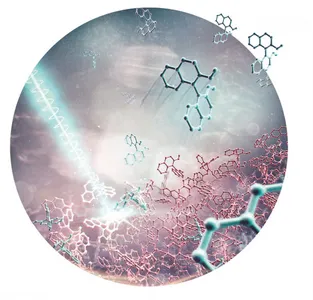SHG-CD Spectroscopy on Chiral Films
Chirality refers to the remarkable property of a two-component system being able to be translated into each other solely through applying a mirror-operation. Chirality can be found in various areas of research, for example, a multitude of pharmaceutical products contain chiral molecules, with usually only one chiral partner desired as the active ingredient.
In collaboration with the Chair of Physical Chemistry (CRC), we are investigating the fundamentals of a laser-based method for the separation and enrichment of chiral isomers in thin films at E11. The surface desorption process from an enantiomeric mixture can be controlled and modified in its dynamics by the handedness of a circularly polarized laser pulse. Ultrafast pulses <50 fs from a Ti:Sa CPA system are used, which allows for bypassing competing desorption processes. The current research focuses on upscaling the process first experimentally demonstrated at E11, and exploring the experimental possibilities and limitations.
On the diagnostics side of a laser-induced excess, conventional spectrometric methods such as CD spectroscopy only allow for determining the enantiomeric content when the molecules occur in isolation, for example, in solution. In disordered systems with pronounced intermolecular interactions, this is only possible in exceptional cases due to the artificial contribution of the superstructure. By employing resonance-enhanced nonlinear differential spectroscopy, we have demonstrated at the chair that molecular chirality can be determined even in such disordered systems. Current measurements aim to extend and complement linear spectroscopic studies on the relationship between optical anisotropy and the enantiomeric content of the system to the nonlinear optical regime. The method proves to be highly robust and predictable in the face of variations in the measurement setup and sample characteristics. Thus, it is applicable for chiral-optical investigations on emerging novel sample systems, such as chiral perovskites.
